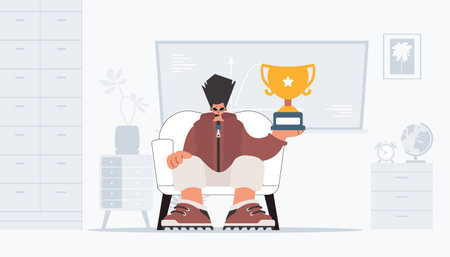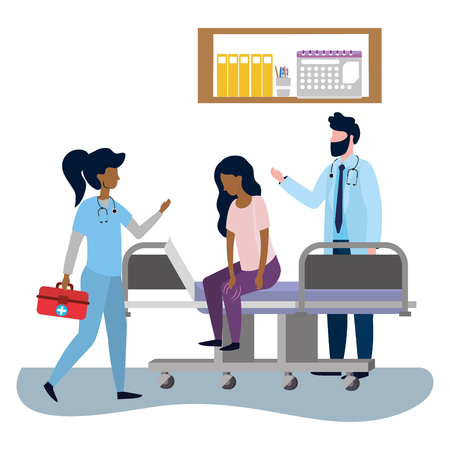Understanding Sleep Debt in the American Lifestyle
Sleep debt is a concept that resonates deeply with many Americans, especially those juggling demanding work schedules, family responsibilities, and an always-on culture. In simple terms, sleep debt refers to the cumulative effect of not getting enough sleep over time. For example, if your body needs eight hours per night but you consistently get only six, you rack up a “debt” that can lead to fatigue, poor concentration, and even long-term health issues. Chronic sleep deprivation has become almost normalized in the United States, where hustle culture and the glorification of busyness often overshadow the importance of adequate rest. Factors such as late-night screen time, shift work, long commutes, and high stress levels make it challenging for many Americans to prioritize sleep. As a result, millions are left wondering if catching up on missed sleep—often through weekend naps or extra hours in bed—can truly make a difference in their health and daily performance.
2. How Naps Affect Sleep Debt
Busy American lifestyles often lead to chronic sleep debt—a cumulative deficit from not getting enough nightly rest. But can napping truly help balance the scales? Let’s explore the science behind how naps influence our brains and bodies, especially in the context of offsetting insufficient sleep at night.
The Science of Napping
When you nap, your brain cycles through lighter stages of sleep, which can provide a quick boost in alertness and mood. Short naps—typically between 10 to 30 minutes—are especially effective for improving cognitive performance without causing grogginess, also known as sleep inertia. This makes power naps popular among students, shift workers, and anyone burning the candle at both ends.
Naps and Cognitive Function
Research shows that even brief daytime sleep can enhance memory, reaction time, and problem-solving skills. Napping gives your prefrontal cortex—the part of your brain responsible for complex thinking—a chance to recharge. For Americans juggling work meetings, family obligations, and commutes, these cognitive benefits can make a noticeable difference in daily productivity.
Mood Regulation
Lack of sleep is closely linked with irritability and decreased emotional resilience. Taking a short nap can lower stress hormones like cortisol and increase serotonin levels, helping you feel more balanced and upbeat throughout the day.
Can Naps Offset Sleep Debt?
While naps offer measurable perks, they aren’t a perfect substitute for consistent nightly rest. Here’s how short naps compare to full-night sleep across key health areas:
| Benefit | Short Nap (10-30 min) | Full Nights Sleep (7-9 hrs) |
|---|---|---|
| Cognitive Boost | Yes – temporary improvement | Yes – sustained effect |
| Mood Enhancement | Moderate – relieves fatigue and stress | Strong – supports emotional stability |
| Physical Recovery | Minimal – limited muscle repair | Optimal – full body restoration |
| Sleep Debt Repayment | Partial – reduces acute tiredness | Best – repays accumulated debt fully |
In summary, naps are a useful tool for temporarily managing sleep deprivation common in American routines. However, while they alleviate some symptoms of sleep loss and improve daytime functioning, they cannot completely replace the restorative effects of regular, quality nighttime sleep.

3. Optimal Nap Strategies for Busy Americans
Choosing the Right Nap Length
For Americans juggling demanding work schedules, not all naps are created equal. Research suggests that a 10- to 20-minute “power nap” is ideal for boosting alertness and cognitive performance without entering deeper stages of sleep, which can lead to grogginess upon waking. Longer naps of 60 to 90 minutes may offer benefits for memory consolidation and emotional processing, but they’re less practical for most busy adults and can disrupt nighttime sleep cycles if timed poorly.
The Best Timing for Napping
Timing your nap is just as important as its duration. The body’s circadian rhythm naturally dips in alertness in the early afternoon—typically between 1:00 and 3:00 p.m.—making this the optimal window for a restorative nap. Napping too late in the day can interfere with falling asleep at night, compounding existing sleep debt rather than alleviating it. For shift workers or those with unconventional hours, napping during personal low-energy periods (ideally before 4:00 p.m.) is recommended to minimize sleep disruption.
Creating an Ideal Nap Environment
In America’s fast-paced work culture, carving out even 15 minutes for rest can be challenging. Still, maximizing nap quality hinges on the right setting. Find a quiet, dimly lit space—whether it’s a break room, your parked car, or a designated nap pod—and use an eye mask or noise-canceling headphones if needed. Setting an alarm ensures you don’t oversleep and enter deep sleep stages, keeping you refreshed rather than groggy.
Practical Tips for Incorporating Naps into Your Routine
If you work from home or have flexible breaks, schedule short naps into your calendar as non-negotiable self-care appointments. For office-bound professionals, advocate for wellness spaces or propose “power down” periods to management—many progressive companies are recognizing the productivity boost that well-timed naps can provide. Ultimately, integrating strategic napping habits tailored to your unique schedule helps busy Americans manage sleep debt while supporting overall health and workplace performance.
4. Potential Pitfalls of Relying on Naps
While taking a quick nap can feel like a lifesaver after a late night or an early morning, using naps as your main tool to manage sleep debt isn’t always the best approach for busy Americans. There are some notable drawbacks that come with trying to “catch up” on lost sleep through daytime napping. Here’s what you should consider before making naps a regular part of your routine:
Sleep Inertia: The Grogginess Factor
One of the most immediate issues with naps—especially those lasting longer than 20-30 minutes—is sleep inertia. This is that heavy, groggy feeling you experience when waking up from a deep stage of sleep. Instead of feeling refreshed, you might struggle to concentrate and react quickly, which can be especially problematic if you’re returning to work or need to make important decisions.
Disrupted Circadian Rhythms
Napping at the wrong time of day or too late in the afternoon can throw off your natural circadian rhythms—the body’s internal clock that regulates sleep and wake cycles. Regularly relying on naps can make it harder to fall asleep at night, potentially leading to a vicious cycle of poor nighttime rest and increased daytime fatigue.
When Nap Timing Backfires
| Nap Timing | Potential Impact |
|---|---|
| Early Afternoon (1-3 PM) | Less likely to disrupt nighttime sleep; may boost alertness |
| Late Afternoon (after 3 PM) | Higher risk of interfering with nighttime sleep; may worsen insomnia |
Productivity Concerns for Busy Americans
In the fast-paced American workplace, carving out time for a nap can be challenging. Even if you have the flexibility, the post-nap sluggishness and potential for disrupted workflow may outweigh the short-term benefits. For many people, regularly depending on naps can mean less time spent on meaningful tasks or connecting with family and friends after work.
The Bottom Line: Use Naps Wisely
Napping isn’t inherently bad—in fact, short, strategic naps can provide a temporary boost in alertness and mood. However, making them your go-to strategy for managing chronic sleep debt comes with real risks. Prioritizing consistent nightly sleep is still the gold standard for supporting your health, productivity, and overall quality of life.
5. Long-Term Solutions for Healthier Sleep Habits
While power naps can offer a quick energy boost, truly overcoming sleep debt requires more sustainable lifestyle changes. For busy Americans juggling multiple responsibilities, implementing practical strategies to promote healthy sleep hygiene is key. Start by establishing a consistent bedtime and wake-up schedule—even on weekends—to help regulate your body’s internal clock. Prioritize winding down before bed with relaxing activities such as reading or gentle stretching, and avoid screens at least 30 minutes before sleeping to minimize blue light exposure.
Creating a balanced daily schedule also plays a crucial role. Try to set boundaries between work and personal time, and don’t be afraid to say no to extra commitments when you’re running low on rest. Consistently carving out enough time for sleep—ideally 7-9 hours per night for most adults—can gradually reduce accumulated sleep debt and improve overall wellbeing.
If you’ve tried adjusting your routines but still struggle with fatigue, mood swings, or trouble concentrating, it may be time to seek professional help. A board-certified sleep specialist or your primary care provider can screen for underlying issues like insomnia, sleep apnea, or anxiety that may be interfering with restorative rest. Remember: while naps are helpful in a pinch, long-term health depends on making sleep a priority every day.
6. Real-Life Applications and Success Stories
Across the United States, more people are experimenting with strategic napping and smarter sleep habits to combat the effects of chronic sleep debt. Lets look at a few inspiring cases where Americans have successfully integrated naps and improved sleep routines into their daily lives, resulting in better energy levels, sharper work performance, and enhanced overall wellbeing.
Case Study 1: The Silicon Valley Power Nap
In the high-pressure world of tech startups, productivity is king. Emily, a software engineer in San Francisco, found herself constantly fatigued after late-night coding sprints. She started using her company’s nap pods for 20-minute midday naps. Within weeks, Emily noticed significant improvements in her afternoon focus, mood stability, and ability to meet deadlines. Her story echoes a growing trend in forward-thinking companies embracing nap-friendly cultures.
Case Study 2: Healthcare Workers on the Night Shift
Healthcare professionals often struggle with irregular hours and long shifts. Dr. Carlos, an ER physician in Dallas, implemented brief power naps during breaks on overnight shifts. He credits these short rests for reducing errors during procedures and keeping his decision-making sharp when every second counts. His hospital has since added quiet rooms to support staff wellbeing.
From College Campuses to Corporate America
Napping isn’t just for high-stress jobs. At universities like UCLA, student wellness centers promote “restorative rest” stations where students like Jasmine recharge between classes. Many report higher test scores and less anxiety after incorporating naps into their routine.
Everyday Families Making Sleep a Priority
Even busy parents in suburban neighborhoods are rethinking family sleep hygiene. The Johnson family in Ohio instituted a household “quiet hour” each afternoon—no screens, just rest or light reading. Both parents and kids say this practice has improved their patience and energy throughout the day.
These real-life examples show that while naps can’t fully erase chronic sleep debt, integrating short rests and prioritizing consistent sleep schedules can help Americans reclaim their health and productivity—even amidst hectic lifestyles. As more individuals and organizations share their success stories, the stigma around napping is fading, replaced by a science-backed appreciation for smarter rest strategies.


